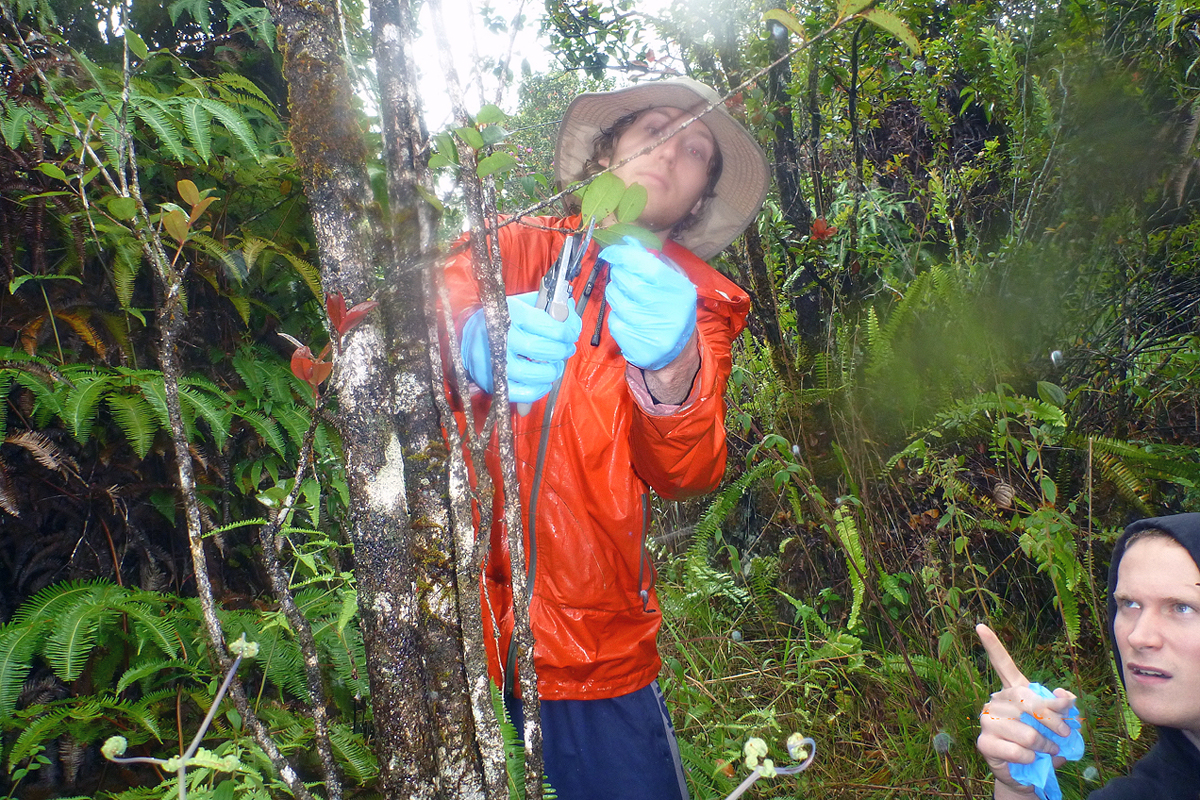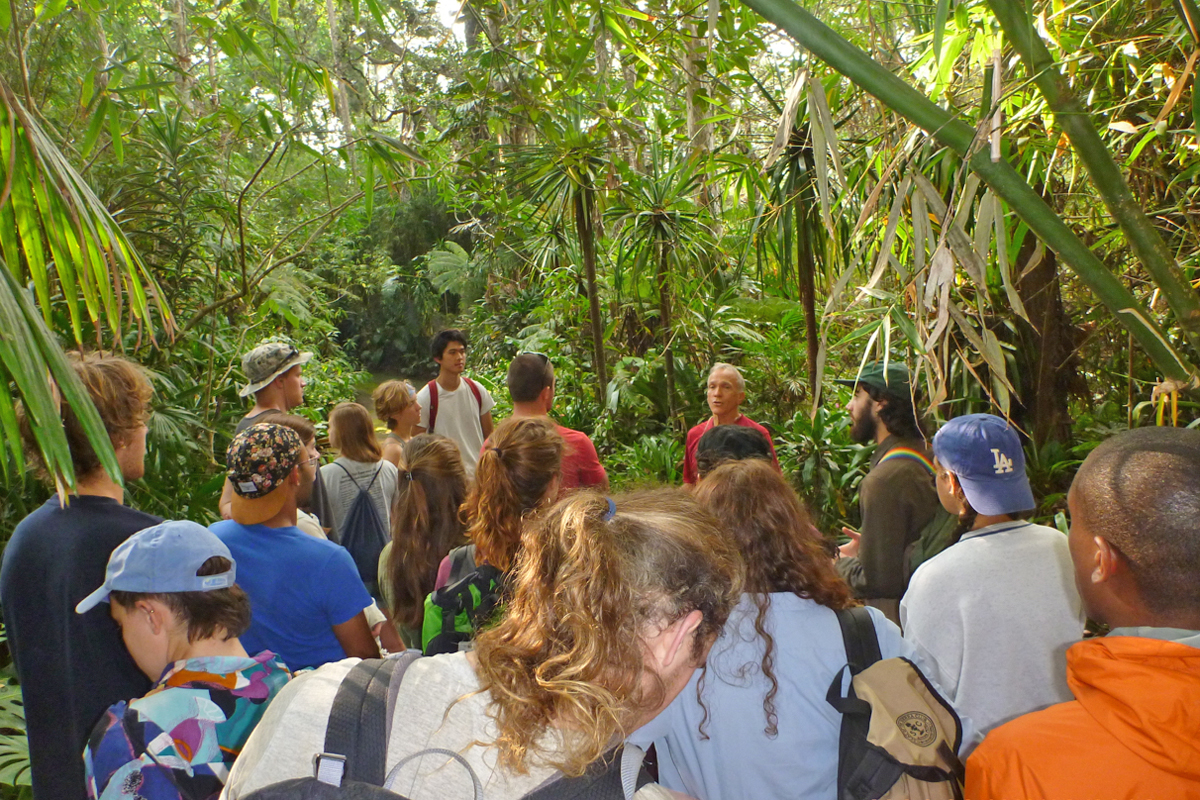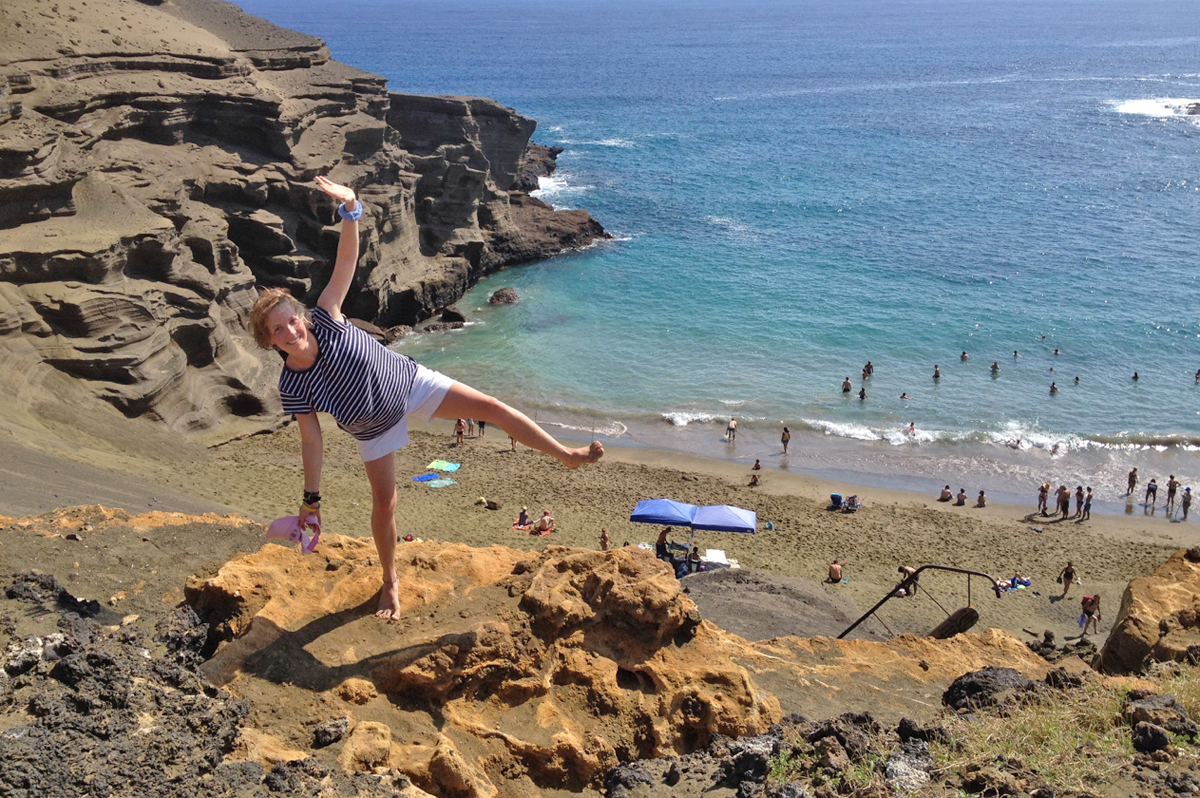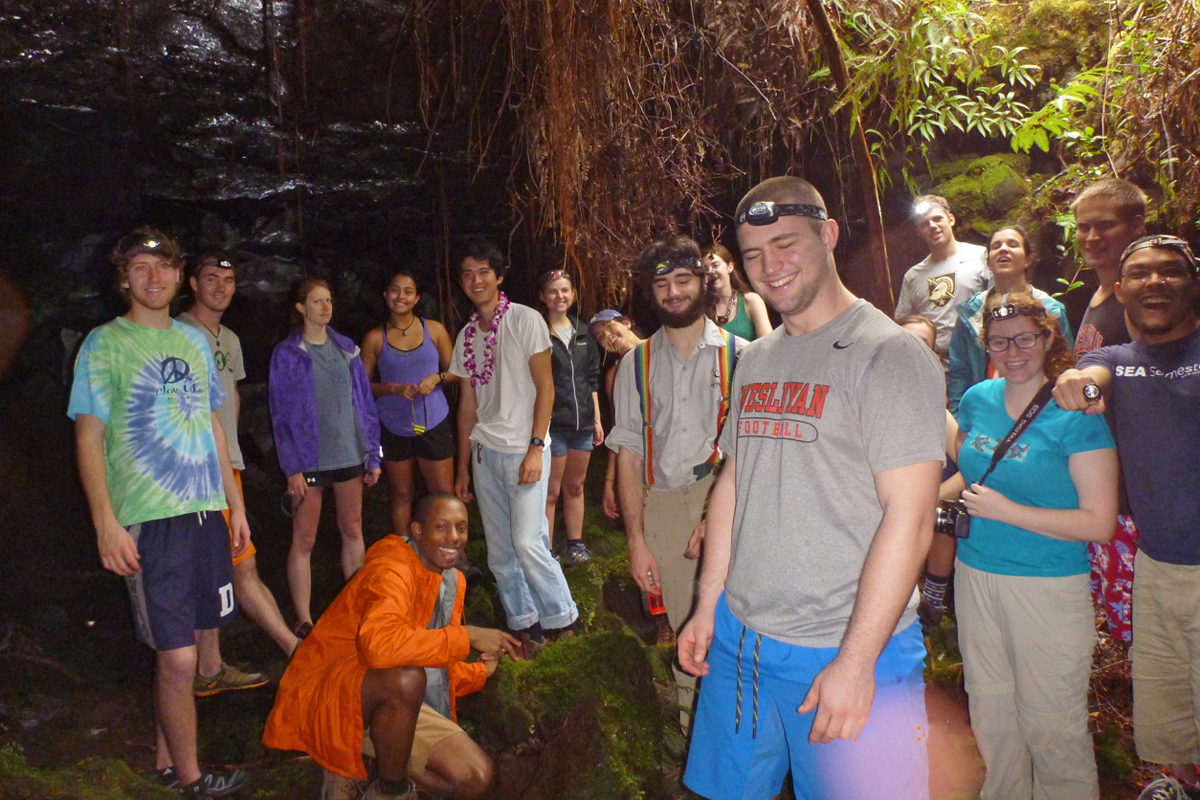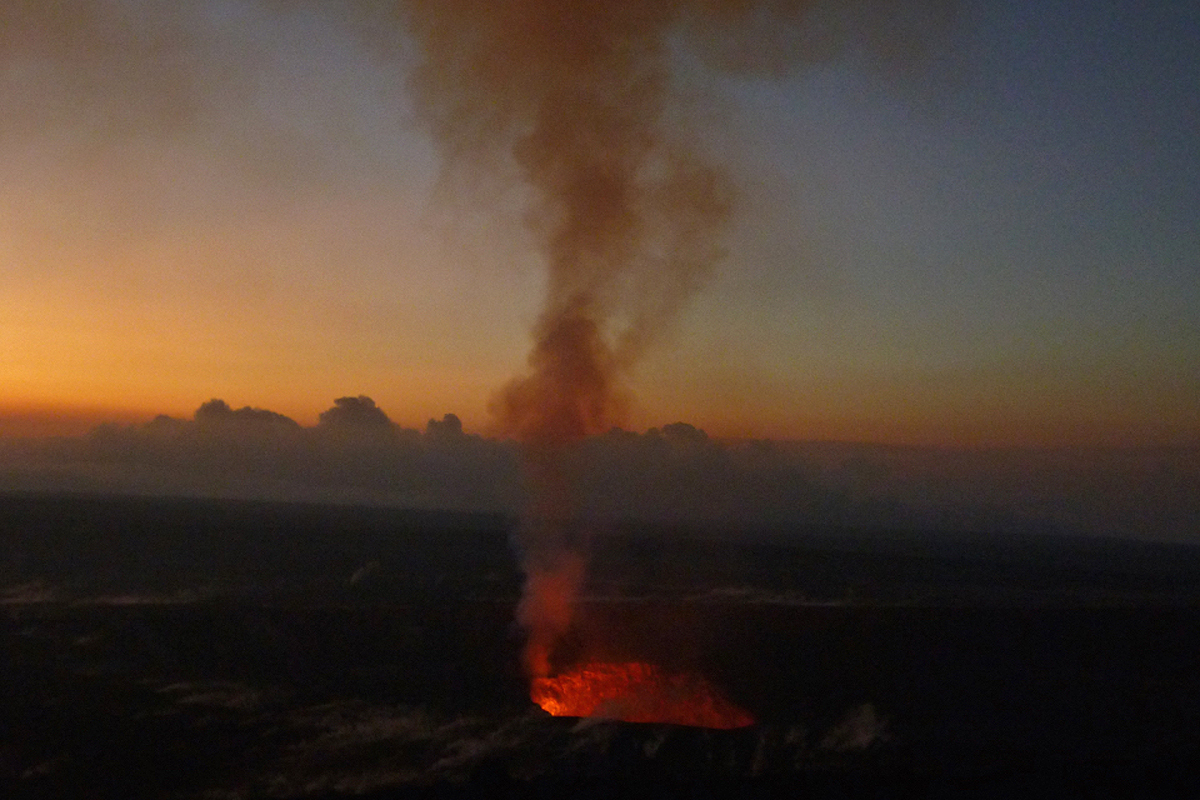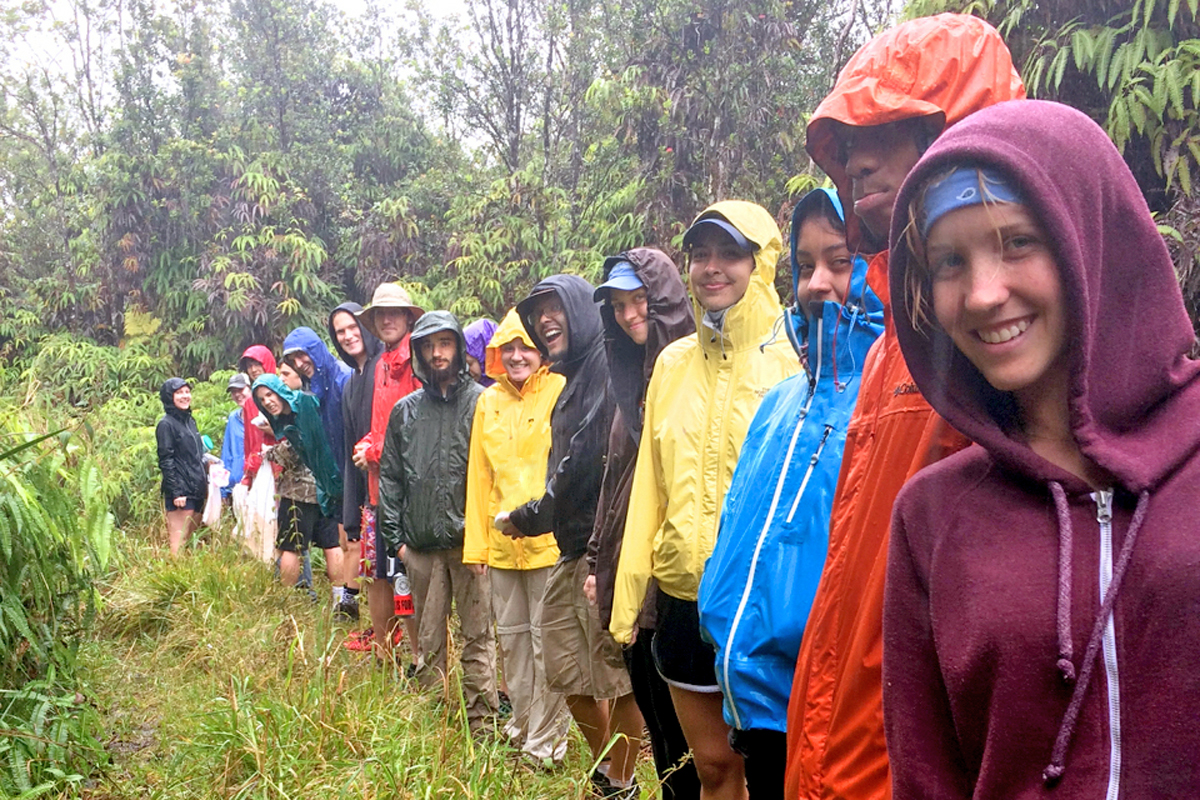Seniors Improve Scientific Research Skills with Studies in Hawaii
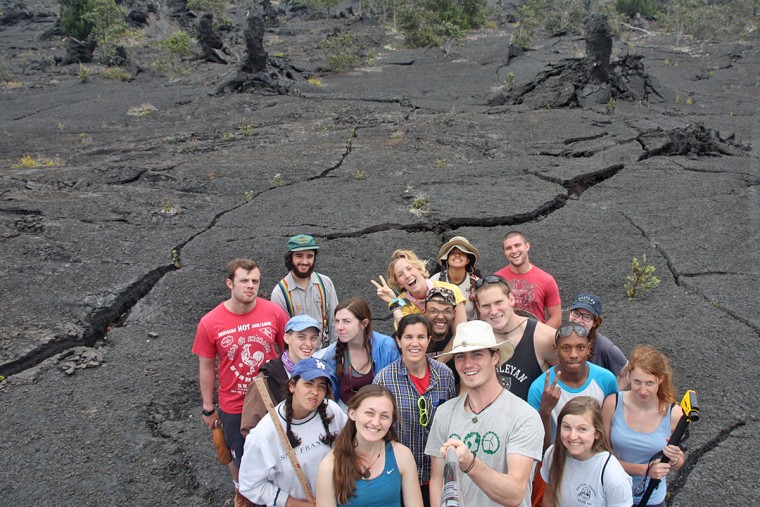
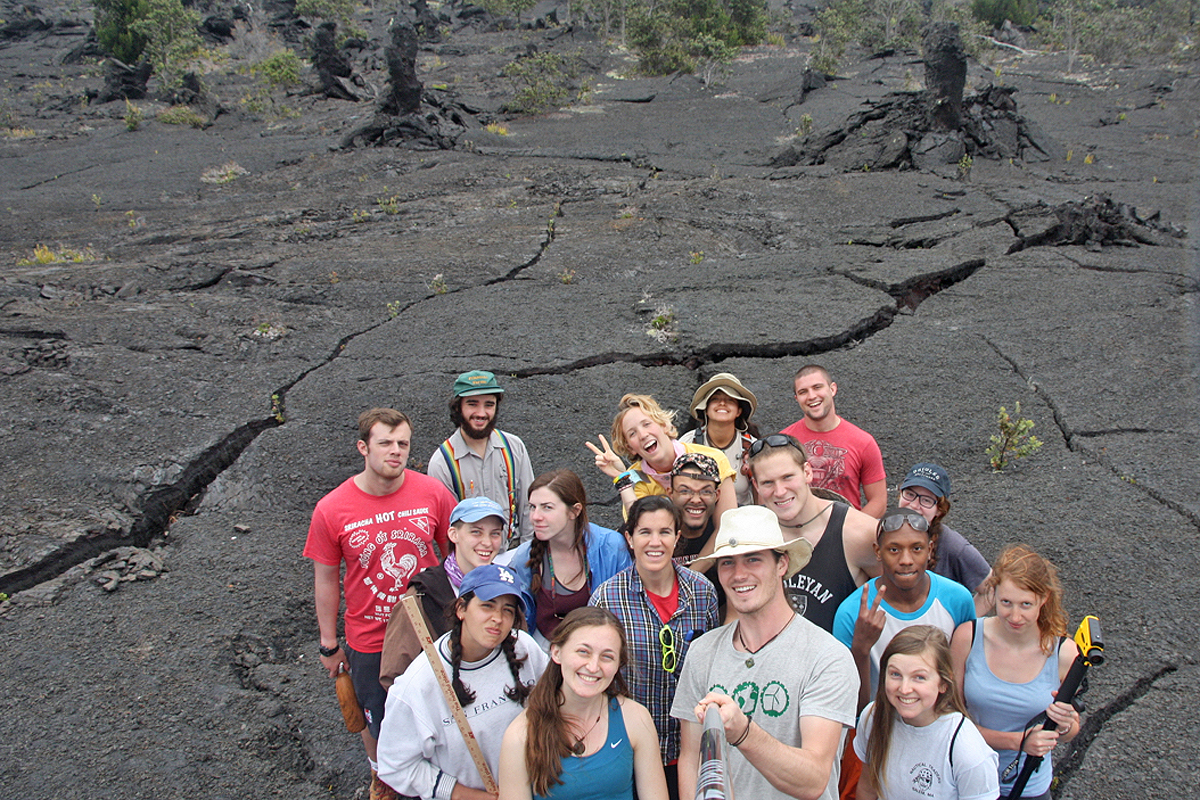
Off the Kona Coast in Hawaii, massive manta rays glide through the ocean waters feeding on microscopic zooplankton. For more than 50 years, local hotels and tour boat companies artificially illuminated the coast with bright lights to attract plankton, and ultimately manta rays seeking an extra boost of nutrition in the evening hours.
“The manta ray tours use white lights, but we were curious to know if different light wavelengths correlated to changes in plankton abundance and diversity,” said earth and environmental studies senior Rebecca Hanschell.
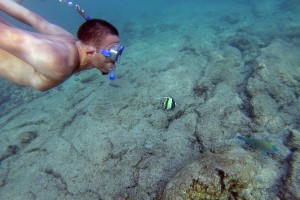
As part of the EE&S 398 Senior Field Research Project course, Hanchsell and 18 of her peers spent Jan. 5-12 in Hawaii working on group research projects. This course is open to all E&ES majors who completed the mandatory course E&ES 397 Senior Seminar during the fall semester.
The goal of 397 is to provide seniors with a seminar-style capstone experience “that explores topics that span multiple subdisciplines of the earth and environmental sciences,” explained Tim Ku, associate professor of earth and environmental sciences. “In addition, students create hypothesis-driven original research projects which are then implemented in 398. We hope the seminar and field research project teaches students how to become independent, professional scientists.”
Hanschell, along with Zachary Calhoun, Alex Fireman and Robert Ramos, worked with a tour boat company to collect samples of seawater exposed to no light, white light, yellow light and red light. After removing water and examining the particulate matter left behind in filters in the SEM microscope, the group discovered that red light treatment had the highest nitrogen concentration and the highest overall number of plankton identified. The control sample collected in pure darkness had the lowest number of identified plankton.
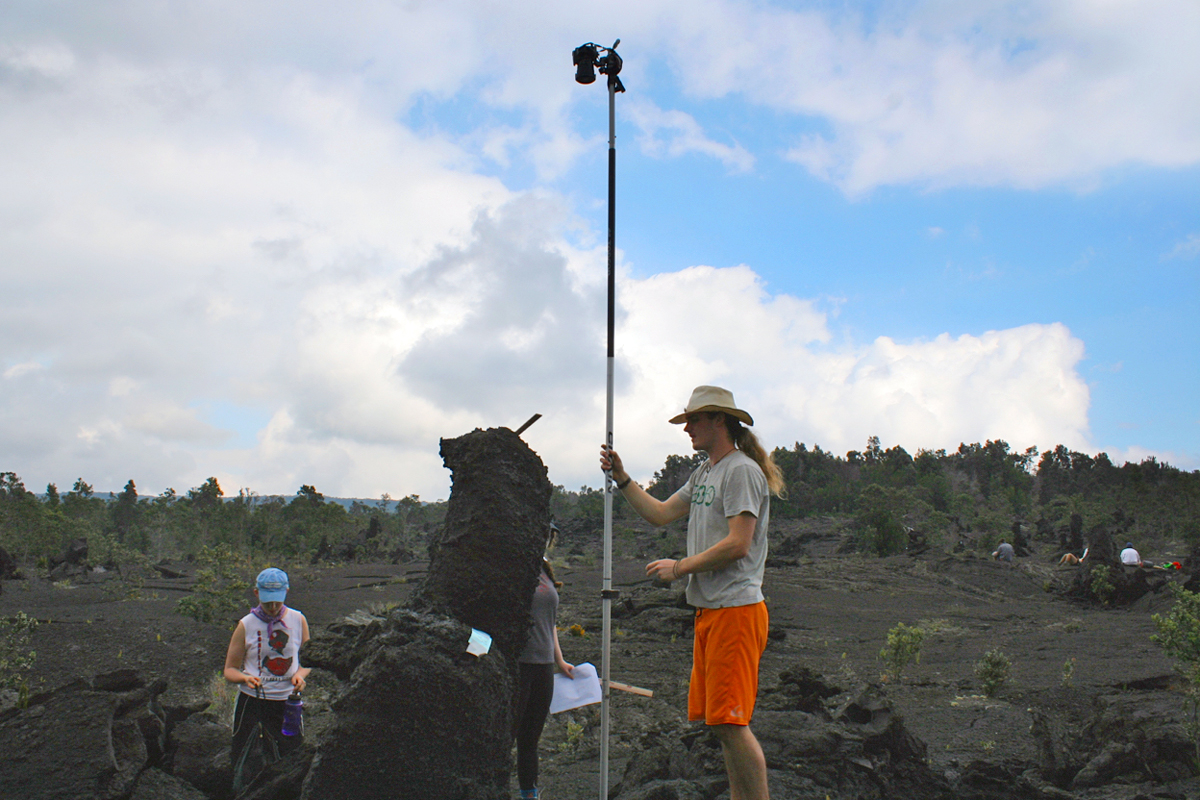
For their senior field research project, Will Sawyer and Lydia Tierney studied a Hawaiian lava tree formed in 1974.
Lava trees form when lava flows into a forest around the trunks of larger trees, Sawyer explained. As it contacts the tree, it cools enough to form a coating around the trunk, eventually leaving a hollow cast of the tree up to the level that the lava reached.
Noting that the tree mold morphology provides a record of the flow environment, Sawyer and Tierney studied the cooling process and noted that these remarkable specimens hold a wealth of untapped information about the history of lava flows.
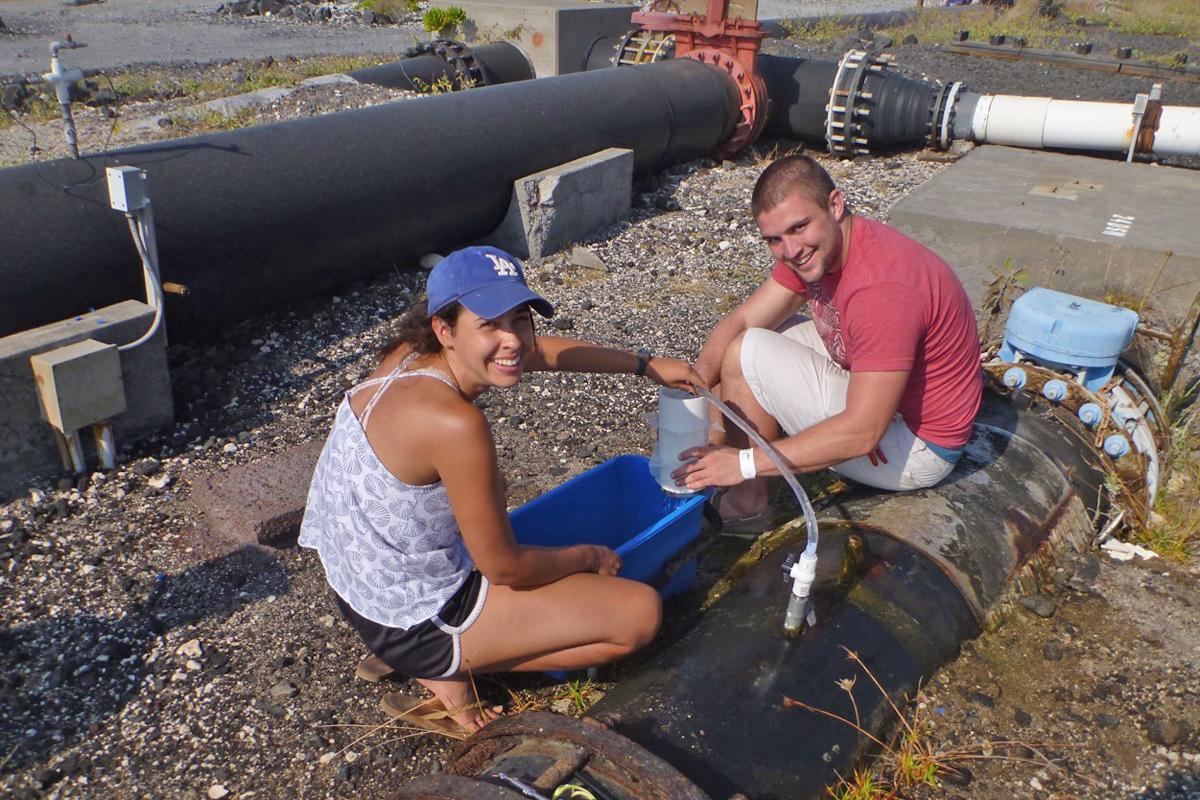
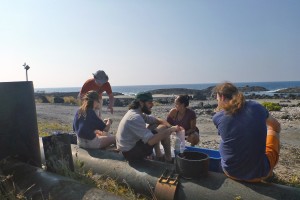
As carbon dioxide builds up on the atmosphere, it’s critical for scientists to understand natural mechanisms for removal of this greenhouse gas.
Erin McGrath, John San Filippo, Kate Cullen and Lena Capece worked at the National Energy Laboratory of Hawaii Authority and studied samples of water taken from various depths to see if this location could be used to examine a biological “pump” for absorbing atmospheric carbon dioxide and pumping it down to the deep ocean, where it can remain for long periods of time.
Their observations of a number of variables, including carbon-13, gave some support for their hypothesis.
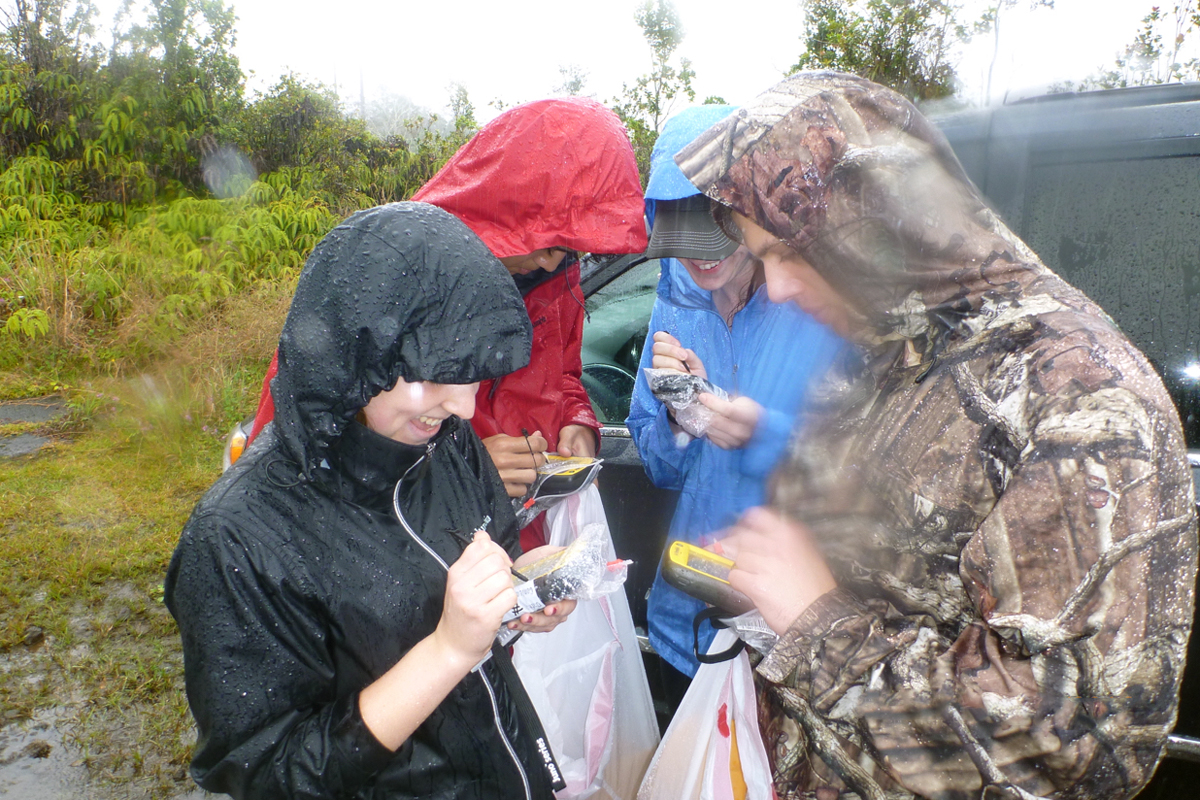
Two groups of students conducted studies on the Ohi’a lehua tree (Metrosideros polymorpha), a culturally and environmentally important species found only on the six largest islands of Hawaii. The flowering evergreen is succumbing at alarming rates to a newly observed wilt fungus that so far has affected an estimated 34,000 acres.
Noting that the fungus produces browning of the canopy tops, students sought to use remote satellite-based sensing technologies to determine if infestations could be detected earlier than through visual inspection. Team members Laura Dempsey, Pierre Gerard, Zachary Kaufman and Madeleine O’Brien developed a potential framework for using remote sensing that could be developed through further work.
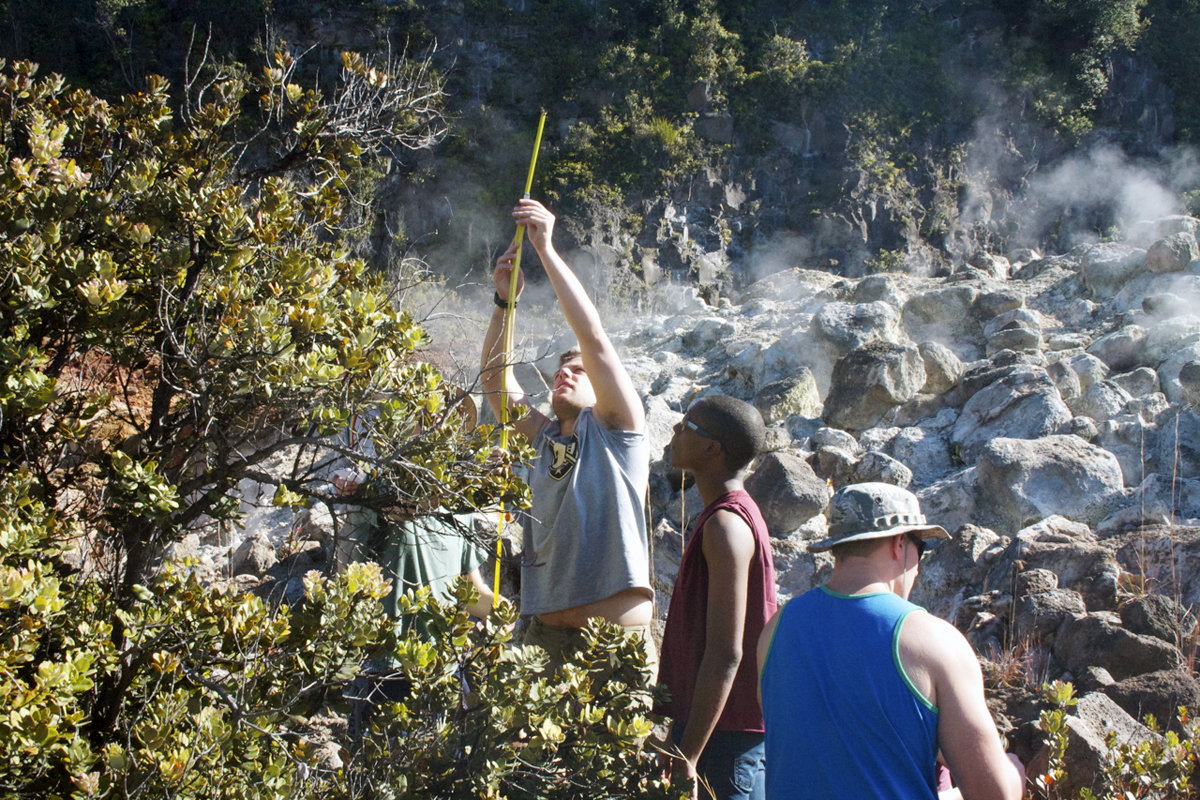
Another group of students examined how Ohiʻa lehua responds to increased sulfur dioxide gasses (SO2) released by volcanic activity. Tessa Hill, Angus McLean, Ryan Moye, Dara Mysliwiec and Jed Siebert learned that the plant’s stoma closed when exposed to high amounts of SO2. The group studied the tree’s leaves found at five various locations.
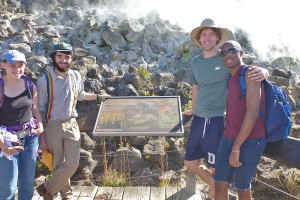
“Our theory was that that the stoma doesn’t open as much because it’s a pollutant. It’s like people wanting to hold their breath when passing exhaust near a bus,” McLean explained.
Students were accompanied on the trip by Ku and Joel LaBella, facility manager for earth and environmental sciences. Joop Varekamp, the Harold Stearns Professor of Earth and Environmental Sciences, also co-taught the class. Both Ku and Varekamp visited Hawaii in August 2015 to scout projects and plan trip logistics.
While in Hawaii, the students visited Hawaii Volcanoes National Park, the Kaumana Lava Tube, Kilauea Volcano, Hawaii Volcano Observatory, Black Sand Beach, Green Sand Beach, Kona Cloud Forest, Mountain Thunder Coffee, National Energy Laboratory of Hawaii Authority facility, and the Maua Kea summit.
This course concludes with student group presentations and written reports.
Generous funding for the class was provided by Larry Davis ’76 and the late Harold Stearns ’21. ” In addition, Harold Stearns was a USGS district geologist in Hawaii and published extensively about Hawaiian groundwaters so it was nice for the class to go back to Hawaii,” Ku said.
Past senior research field classes have conducted studies four times in Death Valley, Calif. and seven times in Puerto Rico. This was the first visit to the Hawaiian islands. (View past News @ Wesleyan stories on these trips from 2015, 2011 and 2008.)
For more information on the Department of Earth and Environmental Sciences see this website. Additional photos of the E&ES 398 Senior Field Research Project capstone course in Hawaii are below:
(Bill Holder contributed to this article. Photos are provided by Tim Ku and E&ES 398 students)
